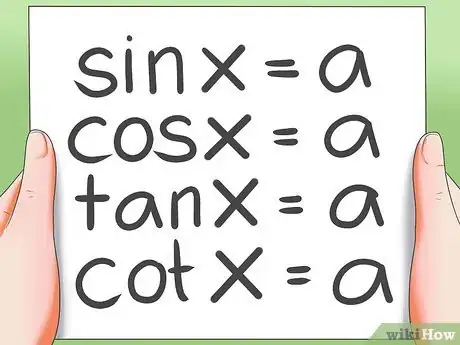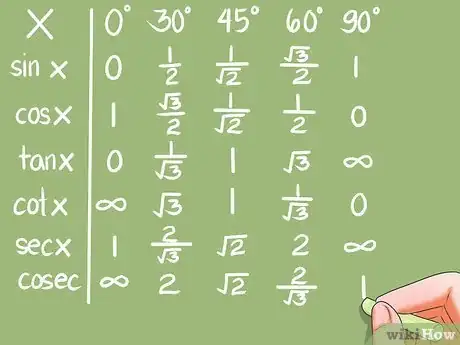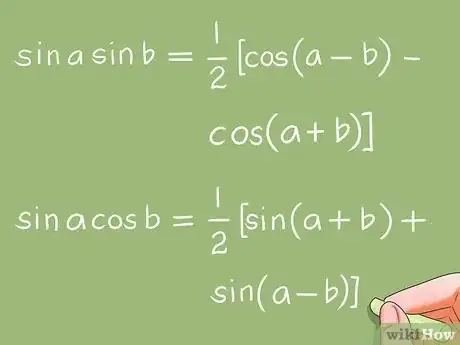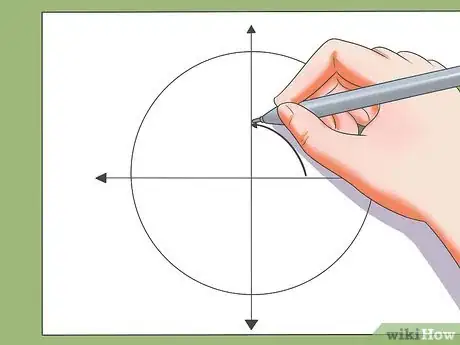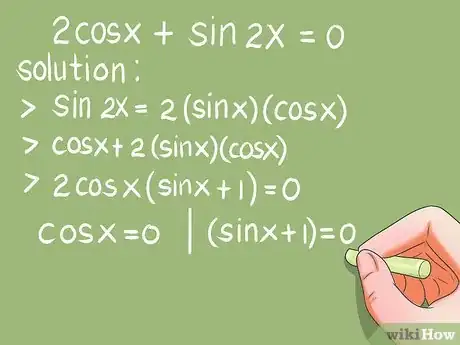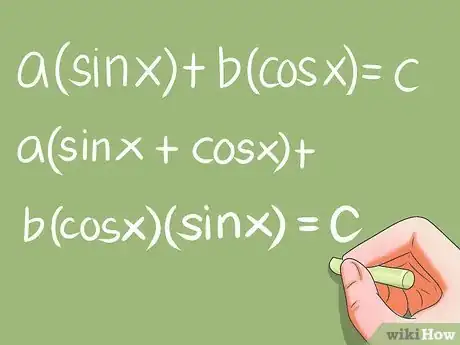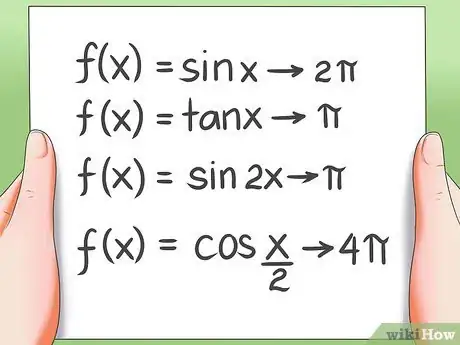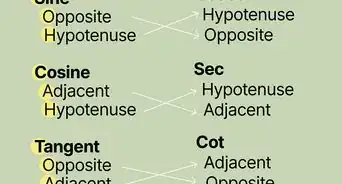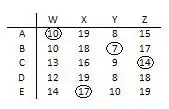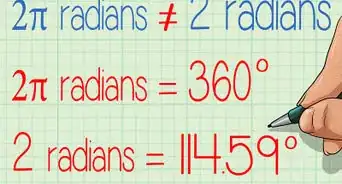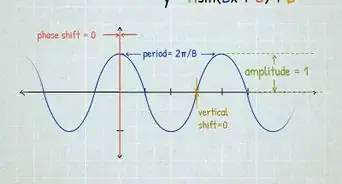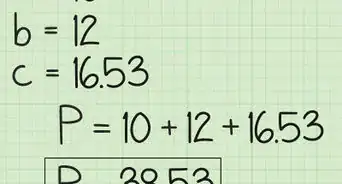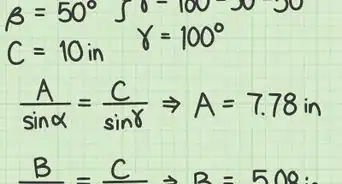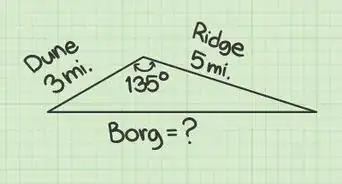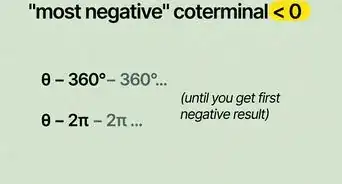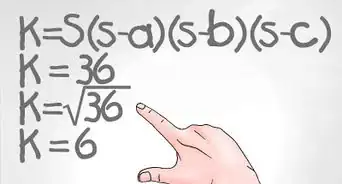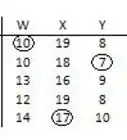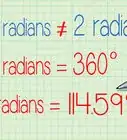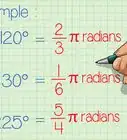wikiHow is a “wiki,” similar to Wikipedia, which means that many of our articles are co-written by multiple authors. To create this article, 17 people, some anonymous, worked to edit and improve it over time.
There are 10 references cited in this article, which can be found at the bottom of the page.
This article has been viewed 243,071 times.
Learn more...
Did you get homework from your teacher that was about solving Trigonometric equations? Did you maybe not pay full attention in class during the lesson on Trigonometric questions? Do you even know what "Trigonometric" means? If you answered yes to these questions, then you don't need to worry because this wikiHow will teach you how to solve Trigonometric equations.
Steps
-
1Know the Solving concept.[1]
- To solve a trig equation, transform it into one or many basic trig equations. Solving trig equations finally results in solving 4 types of basic trig equations.
-
2Know how to solve basic trig equations.[2]
- There are 4 types of basic trig equations:
- sin x = a ; cos x = a
- tan x = a ; cot x = a
- Solving basic trig equations proceeds by studying the various positions of the arc x on the trig circle, and by using trig conversion table (or calculator). To fully know how to solve these basic trig equations, and similar, see book titled :"Trigonometry: Solving trig equations and inequalities" (Amazon E-book 2010).
- Example 1. Solve sin x = 0.866. The conversion table (or calculator) gives the answer: x = Pi/3. The trig circle gives another arc (2Pi/3) that has the same sin value (0.866). The trig circle also gives an infinity of answers that are called extended answers.
- x1 = Pi/3 + 2k.Pi, and x2 = 2Pi/3. (Answers within period (0, 2Pi))
- x1 = Pi/3 + 2k Pi, and x2 = 2Pi/3 + 2k Pi. (Extended answers).
- Example 2. Solve: cos x = -1/2. Calculators give x = 2 Pi/3. The trig circle gives another x = -2Pi/3.
- x1 = 2Pi/3 + 2k.Pi, and x2 = - 2Pi/3. (Answers within period (0, 2Pi))
- x1 = 2Pi/3 + 2k Pi, and x2 = -2Pi/3 + 2k.Pi. (Extended answers)
- Example 3. Solve: tan (x - Pi/4) = 0.
- x = Pi/4 ; (Answer)
- x = Pi/4 + k Pi; ( Extended answer)
- Example 4. Solve cot 2x = 1.732. Calculators and the trig circle give
- x = Pi/12 ; (Answer)
- x = Pi/12 + k Pi ; (Extended answers)
Advertisement -
3Learn the Transformations used in solving trig equations.[3]
- To transform a given trig equation into basic trig ones, use common algebraic transformations (factoring, common factor, polynomial identities...), definitions and properties of trig functions, and trig identities. There are about 31, among them the last 14 trig identities, from 19 to 31, are called Transformation Identities, since they are used in the transformation of trig equations.[4] See book mentioned above.
- Example 5: The trig equation: sin x + sin 2x + sin 3x = 0 can be transformed, using trig identities, into a product of basic trig equations: 4cos x*sin (3x/2)*cos (x/2) = 0. The basic trig equations to be solved are: cos x = 0 ; sin (3x/2) = 0 ; and cos (x/2) = 0.
-
4Find the arcs whose trig functions are known.[5]
- Before learning solving trig equations, you must know how to quickly find the arcs whose trig functions are known. Conversion values of arcs (or angles) are given by trig tables or calculators.[6]
- Example: After solving, get cos x = 0.732. Calculators give the solution arc x = 42.95 degree. The trig unit circle will give other solution arcs that have the same cos value.
-
5Graph the solution arcs on the trig unit circle.[7]
- You can graph to illustrate the solution arcs on the trig unit circle. The terminal points of these solution arcs constitute regular polygons on the trig circle. For examples:
- The terminal points of the solution arcs x = Pi/3 + k.Pi/2 constitute a square on the trig unit circle.
- The solution arcs x = Pi/4 + k.Pi/3 are represented by the vertexes of a regular hexagon on the trig unit circle.
-
6Learn the Approaches to solve trig equations.[8]
- If the given trig equation contains only one trig function, solve it as a basic trig equation. If the given equation contains two or more trig functions there are 2 approaches in solving, depending on transformation possibility.
- A. Approach 1.
- Transform the given trig equation into a product in the form: f(x).g(x) = 0 or f(x).g(x).h(x) = 0, in which f(x), g(x) and h(x) are basic trig equations.
- Example 6. Solve: 2cos x + sin 2x = 0. (0 < x < 2Pi)
- Solution. Replace in the equation sin 2x by using the identity: sin 2x = 2*sin x*cos x.
- cos x + 2*sin x*cos x = 2cos x*( sin x + 1) = 0. Next, solve the 2 basic trig functions: cos x = 0, and (sin x + 1) = 0.
- Example 7. Solve: cos x + cos 2x + cos 3x = 0. (0 < x < 2Pi)
- Solution: Transform it to a product, using trig identities: cos 2x(2cos x + 1 ) = 0. Next, solve the 2 basic trig equations: cos 2x = 0, and (2cos x + 1) = 0.
- Example 8. Solve: sin x - sin 3x = cos 2x. (0 < x < 2Pi)
- Solution: Transform it into a product, using trig identities: -cos 2x*(2sin x + 1) = 0. Then solve the 2 basic trig equations: cos 2x = 0, and (2sin x + 1) = 0.
- B. Approach 2.
- Transform the given trig equation into a trig equation having only one unique trig function as variable. There are a few tips on how to select the appropriate variable. The common variables to select are: sin x = t; cos x = t; cos 2x = t, tan x = t and tan (x/2) = t.
- Example 9. Solve: 3sin^2 x - 2cos^2 x = 4sin x + 7 (0 < x < 2Pi).
- Solution. Replace in the equation (cos^2 x) by (1 - sin^2 x), then simplify the equation:
- 3sin^2 x - 2 + 2sin^2 x - 4sin x - 7 = 0. Call sin x = t. The equation becomes: 5t^2 - 4t - 9 = 0. This is a quadratic equation that has 2 real roots: t1 = -1 and t2 = 9/5. The second t2 is rejected since > 1. Next, solve: t = sin = -1 --> x = 3Pi/2.
- Example 10. Solve: tan x + 2 tan^2 x = cot x + 2.
- Solution. Call tan x = t. Transform the given equation into an equation with t as variable: (2t + 1)(t^2 - 1) = 0. Solve for t from this product, then solve the basic trig equation tan x = t for x.
- If the given trig equation contains only one trig function, solve it as a basic trig equation. If the given equation contains two or more trig functions there are 2 approaches in solving, depending on transformation possibility.
-
7Solve special types of trig equations.
- There are a few special types of trig equations that require some specific transformations. Examples:
- a*sin x+ b*cos x = c ; a(sin x + cos x) + b*cos x*sin x = c ;
- a*sin^2 x + b*sin x*cos x + c*cos^2 x = 0
-
8Learn the Periodic Property of trig functions.[9]
- All trig functions are periodic meaning they come back to the same value after a rotation for one period.[10]
Examples:
- The function f(x) = sin x has 2Pi as period.
- The function f(x) = tan x has Pi as period.
- The function f(x) = sin 2x has Pi as period.
- The function f(x) = cos (x/2) has 4Pi as period.
- If the period is specified in the problem/test, you have to only find the solution arc(s) x within this period.
- NOTE: Solving trig equation is a tricky work that often leads to errors and mistakes. Therefore, answers should be carefully checked. After solving, you can check the answers by using a graphing calculator to directly graph the given trig equation R(x) = 0. The answers (real roots) will be given in decimals. For example, Pi is given by the value 3.14
- All trig functions are periodic meaning they come back to the same value after a rotation for one period.[10]
Examples:
References
- ↑ https://www.khanacademy.org/math/geometry/hs-geo-trig/hs-geo-solve-for-a-side/a/unknown-side-in-right-triangle-w-trig
- ↑ https://www.purplemath.com/modules/solvtrig.htm
- ↑ https://www.shelovesmath.com/algebra/advanced-algebra/parent-graphs-and-transformations/#GenericTransformationsofFunctions
- ↑ https://www.khanacademy.org/math/precalculus/trig-equations-and-identities-precalc/using-trig-identities-precalc/v/examples-using-pythagorean-identities-to-simplify-trigonometric-expressions
- ↑ https://www.khanacademy.org/math/precalculus/trig-equations-and-identities-precalc/inverse-trig-functions-precalc/v/inverse-trig-functions-arcsin
- ↑ https://www.mathopenref.com/arcsin.html
- ↑ https://courses.lumenlearning.com/precalculus/chapter/unit-circle-sine-and-cosine-functions/
- ↑ https://mathbitsnotebook.com/Algebra2/TrigConcepts/TCEquationsMore.html
- ↑ https://www.analyzemath.com/trigonometry/properties.html
Community Q&A
-
QuestionIf I know two sides of a triangle, how can I find the hypotenuse (to the nearest whole number)?
 Community AnswerSquare the lengths of the two sides you know, add the results together, then take the square root of that result and round it to the nearest whole number.
Community AnswerSquare the lengths of the two sides you know, add the results together, then take the square root of that result and round it to the nearest whole number. -
QuestionHow do I find the third side of a triangle if I’m only given 1 side length and 1 angle?
 DonaganTop AnswererKnowing one side and one angle is not enough information to find any of a triangle's other components.
DonaganTop AnswererKnowing one side and one angle is not enough information to find any of a triangle's other components. -
QuestionWhat type of calculator do I need to do trigonometry?
 Community AnswerA normal scientific calculator is fine. A graphics calculator will also work.
Community AnswerA normal scientific calculator is fine. A graphics calculator will also work.
